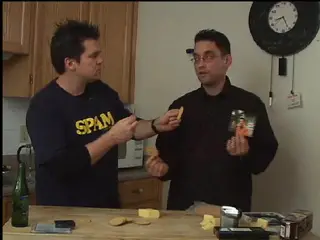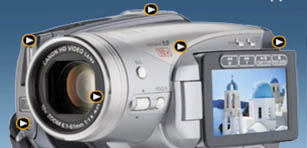LabRats #003: Lights, camera, action!
Cheese and crackers play an important role in this installment of the LabRats show. The crackers represent lenses, while the cheese plays the remarkable role of light-capturing devices a.k.a. CCD.
Cameras that capture moving action for posterity have always been rather complicated: how do you thread film in co-ordination wih shutter openings at a given speed, making sure the picture isn’t jumping up and down and from side to side? In the beginning, you couldn’t. Just remember the good old silent movies with Charlie Chaplin, Buster Keaton, Harold Lloyd or Oliver and Hardy. Sure, the jerky movements have acquired a certain degree of charm in today’s viewer’s eye, but if you want to record your grandchild’s first steps, for example, there’s enough jerkiness on the set as it is and no need to enhance it even further with an unstable picture.
And now, imagine, if you will, that you made things less complicated, on the one hand, by removing the film, and more complicated, on the other, by replacing it with electronics.
It used to be that the bulkier the camera, the more features it had – and the easier it would be to hold it steady.
Not so in today’s cameras. James Bond would be perfectly ecstatic, getting a modern three-CCD device (a must, says Sean Carruthers). Not only would he not have to carry tapes around, in the cases of the newest equipment, he wouldn’t even have to drag along memory cards. Today’s camcorder’s hard drive is perfectly capable of holding more than a half of a day worth of images.
By the way, gone are the words such as filming or videotaping, too. Recording’s the word these days.


